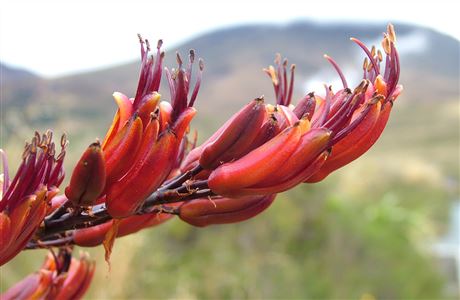Description
***A PERCENTAGE OF PROCEEDS GO TO SUPPORTING REWILDING PROJECTS***
Free tutorial comes with detailed instructions — 29 pages including detailed, high-resolution photos! Detailing how to make Native Tree and Wildflower seed balls list of everything you need to make them as well as my insider tips gleaned from robust scientific trials.
There are two identified species of flax in New Zealand – common flax (harakeke) and mountain flax (wharariki).
We all recognise the tall, green, sword-like leaves of flax that can be found growing throughout New Zealand.
Common flax is found throughout the country, especially in wet areas, while mountain flax is found both at higher altitudes and along exposed coastlines.
Quick facts
- Flax is unique to New Zealand and is one of our most ancient plant species.
- Flax bushes will often support a large community of animals, providing shelter and an abundant food resource.
- Tui, bellbirds/ korimako, saddlebacks/tīeke, short tailed bats/pekapeka, geckos and several types of insects enjoy nectar from the flax flower.
- Flax snails, a rare land snail living only in the Far North, often shelter under flax bushes. These snails don’t eat any part of the flax, but rather they munch on fallen leaves from native broadleaved trees.
- Harakeke was the name given to this plant by Māori.
- The first European traders called it ‘flax’ because its fibres were similar to that of true flax found in other parts of the world.
- Although we still call it flax today, harakeke is really a lily.
Flax species
Common flax grows up to three metres high and its flower stalks can reach up to four metres. It has seedpods that stand upright from the stems.
Mountain flax never grows as large as common flax, rarely reaching more than 1.6 metres high, and its seedpods hang down.
Within the two flax species, there are numerous different varieties of flax. Some have drooping, floppy leaves while others grow as stiff and upright as spears. Flax flowers can vary in colour from yellow to red to orange.
Uses of flax
Flax was a valuable resource to Europeans during the nineteenth century because of its strength. It was New Zealand’s biggest export by far until wool and frozen mutton took over later in the century.
Today, flax is used in soaps, hand creams, shampoos and a range of other cosmetics. Flaxseed oil can also be found for sale. There have even been experiments to make flax into wine!
Flax was the most important fibre plant to Māori in New Zealand. Each pā or marae typically had a ‘pā harakeke’, or flax plantation. Different varieties were specially grown for their strength, softness, colour and fibre content.
The uses of the flax fibre were numerous and varied. Clothing, mats, plates, baskets, ropes, bird snares, lashings, fishing lines and nets were all made from flax leaves. Floats or rafts were made out of bundles of dried flower stalks. The abundant nectar from flax flowers was used to sweeten food and beverages.
Flax also had many medicinal uses. The sticky sap or gum that flax produces was applied to boils and wounds and used for toothache. Flax leaves were used in binding broken bones and matted leaves were used as dressings. Flax root juice was routinely applied to wounds as a disinfectant.
Removing the leaves
Traditionally when harakeke leaves were removed from the plant, only the older leaves on the outside were taken. It was believed the three inner layers of the plant represented a family. The outer layer represented the grandparents, whereas the inner layer of new shoots – the child – remained and were to be protected by the next inner layer of leaves, the parents.
Threats
Flax is generally a very common plant throughout New Zealand, but many of the special forms that were cultivated by Māori for weaving were nearly lost during the twentieth century.
Luckily, a few growers maintained their collections of special flaxes over the years. These cultivars have been in strong demand again due to a revival of interest in flax weaving over the last 20 years. Landcare Research now holds national collections of the unique cultivars and distributes plants to weaving groups and marae throughout the country.
You can help
Flax makes an excellent garden plant. It will attract native birds such as bellbirds/korimako and tui and provides wonderful shelter.
Native plants are a great way to enhance your own garden as well as your city or town’s environment.
Source; DoC






